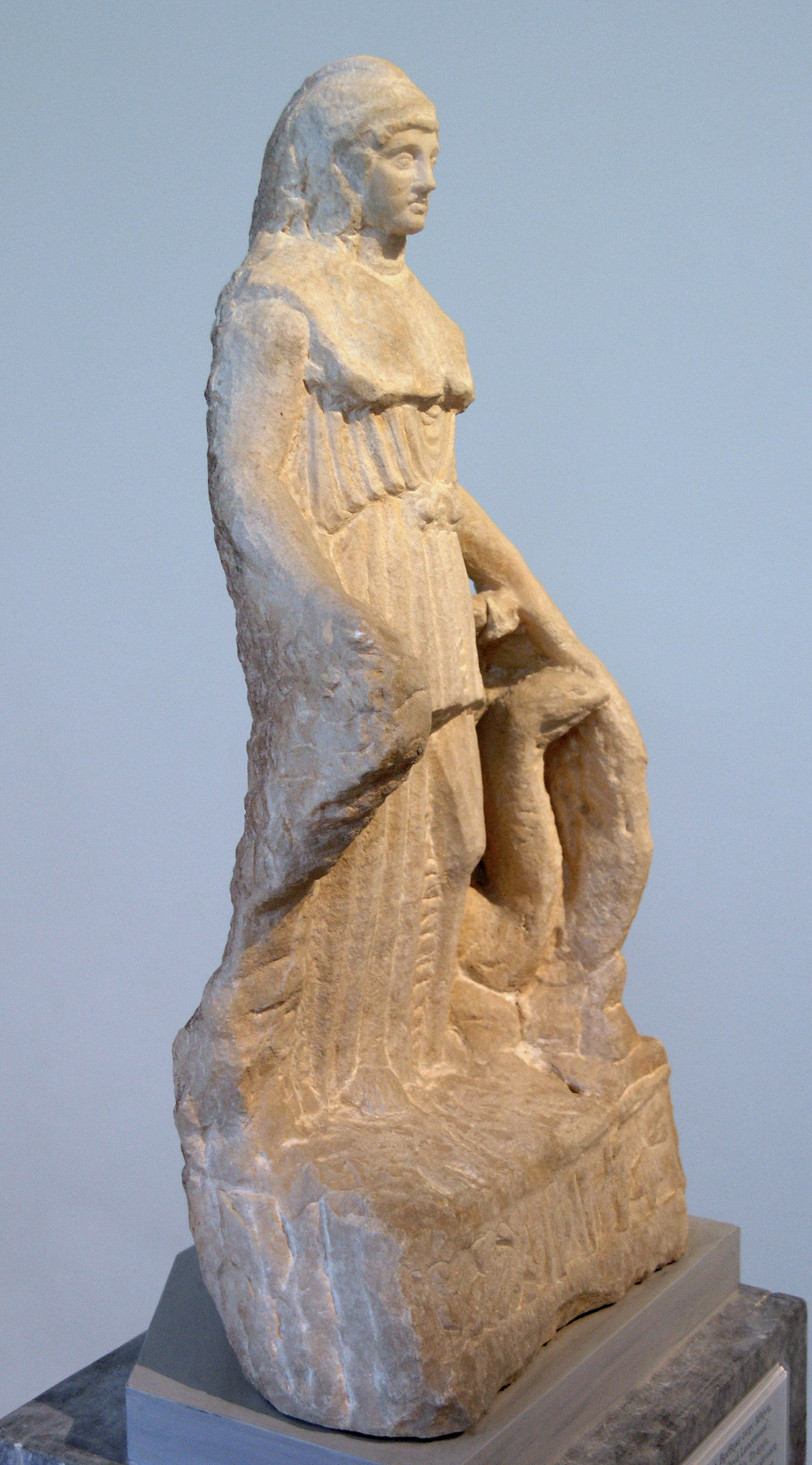Lenormant Athena on:
[Wikipedia]
[Google]
[Amazon]
 The Lenormant Athena is the name given to a small Greek statuette which was made in the first century CE.
The Lenormant Athena is the name given to a small Greek statuette which was made in the first century CE.

Discovery
The Lenormant Athena was discovered in 1859 near thePnyx
The Pnyx (; ; , ''Pnyka'') is a hill or hillside in central Athens, the capital of Greece. Beginning as early as 507 BC (Fifth-century Athens), the Athenians gathered on the Pnyx to host their popular assemblies, thus making the hill one of the ...
hill in Athens
Athens ( ) is the Capital city, capital and List of cities and towns in Greece, largest city of Greece. A significant coastal urban area in the Mediterranean, Athens is also the capital of the Attica (region), Attica region and is the southe ...
and identified by François Lenormant
François Lenormant (; 17 January 1837 – 9 December 1883) was a 19th-century French Hellenist, Assyriologist, and archaeologist.
Biography Early life
Lenormant's father, Charles Lenormant, distinguished as an archaeologist, numismatist and E ...
a year later as a small copy of the Athena Parthenos
The statue of ''Athena Parthenos'' () was a monumental chryselephantine sculpture of the goddess Athena. Attributed to Phidias and dated to the mid-fifth century BCE, it was an offering from the city of Athens to Athena, its tutelary deity. The ...
of Phidias
Phidias or Pheidias (; , ''Pheidias''; ) was an Ancient Greek sculptor, painter, and architect, active in the 5th century BC. His Statue of Zeus at Olympia was one of the Seven Wonders of the Ancient World. Phidias also designed the statues of ...
. The high pentelic marble
Mount Pentelicus or Pentelikon (, or ) is a mountain in Attica (region), Attica, Greece, situated northeast of Athens and southwest of Marathon, Greece, Marathon. Its highest point is the peak ''Pyrgari'', with an elevation of 1,109 m. The m ...
sculpture has thus come to be known by his name. The unfinished work is of great art historical significance since it not only shows us what Phidias' statue looked like but also the reliefs on her shield and the base on which she stood, which are otherwise only known from literary sources.Description
Athena stands in a quiet, graceful pose, resting her weight on her right leg. She is dressed in an Atticpeplos
A peplos () is a body-length garment established as typical attire for women in ancient Greece by , during the late Archaic Greece, Archaic and Classical Greece, Classical period. It was a long, rectangular cloth with the top edge folded down ab ...
. Her left arm rests on her shield. An Amazonomachy
In Greek mythology, an Amazonomachy (English language, English translation: "Amazon battle"; plural, Amazonomachiai () or Amazonomachies) is a mythological battle between the ancient Greeks and the Amazons, a nation of all-female warriors. Th ...
is depicted on the shield. In her right hand, which rests on a strong support, Athena must have held a Nike
Nike often refers to:
* Nike, Inc., a major American producer of athletic shoes, apparel, and sports equipment
* Nike (mythology), a Greek goddess who personifies victory
Nike may also refer to:
People
* Nike (name), a surname and feminine giv ...
, which has not survived. The unfinished base depicts the birth of Pandora
In Greek mythology, Pandora was the first human woman created by Hephaestus on the instructions of Zeus. As Hesiod related it, each god cooperated by giving her unique gifts. Her other name—inscribed against her figure on a white-ground '' ky ...
. The back is still in an unfinished state as well.Location
Today the statuette is stored in theNational Archaeological Museum, Athens
The National Archaeological Museum () in Athens houses some of the most important artifacts from a variety of archaeological locations around Greece from prehistory to late antiquity. It is considered one of the greatest museums in the world and ...
with inventory number 128.
Bibliography
* Nikolaos Kaltsas: '' Sculpture in the National Archaeological Museum, Athens''. The J. Paul Getty Museum, Los Angeles 2002 , p. 106.External links
* {{sculpture-stub Archaeological discoveries in Attica National Archaeological Museum, Athens Marble sculptures in Greece Sculptures by Phidias Roman copies of 5th-century BC Greek sculptures Sculptures in Athens 1859 archaeological discoveries Sculptures of Athena Unfinished sculptures 1st-century sculptures Pandora Statues in Greece Sculptures of women in Greece